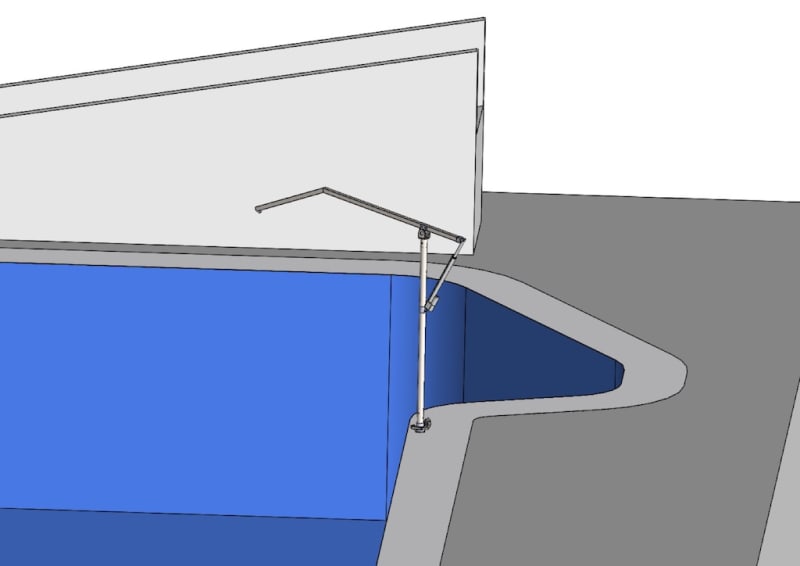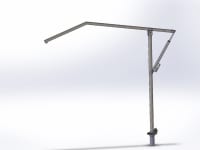The cranes that are used in hydrotherapy, most of all in swimming pools, are used to move up and down patients with some disabilities. Many of these cranes are hydraulic and maneuvered manually; only a few are semi-automatic and use an electric actuator. The problem is that its use is very rudimentary and not very precise; since it would also be necessary to have two therapists to be able to lower the patient to the pool, which is also very tedious.
One of the best ways to optimize this process and make it easier, safer and more pleasant is using an automatic crane that does the whole process of raising and lowering the patient to the pool. The crane will be controlled remotely by the same therapist giving the orders to raise, turn and lower the patient to the pool at will, without having to directly manipulate the machine. The crane is a rotating rocker type, since it consists of an extended arm supported on a column, which swings up and down with the action of an electric actuator which on the same column; the whole column rotates with the whole set around 180 degrees by means of a gear system driven by an electric motor.
The cranes for hydrotherapies existing in the markets have a function of raising and lowering the patient by means of one or two board's switches, but not the option to turn, which is done manually and in many cases the cranes come completely manual. For this reason a remote control crane for use in hydrotherapies would be advantageaus in the market since it would be a novelty in the field of hydrotherapy. The crane itself consist of two tubes of a corrosion resistant material, which will be for the rocker arm and the support column, an electric actuator with its respective grips, a crown-pinion conic gear system, a stepper motor; a control unit with its respective electrical connections and a remote control commanded by the therapist.
Like this entry?
-
About the Entrant
- Name:Richard Javier Montes Alzate
- Type of entry:individual
- Patent status:none





